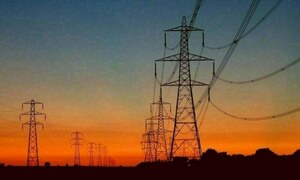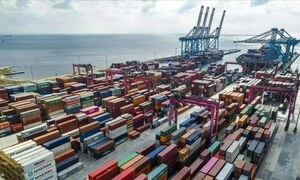India, which along with China is projected to become a global powerhouse in the next two decades, has launched a massive hunt for foreign oil to keep fuelling its economic growth engine. Only 30 percent of India's oil needs are met from domestic sources and this is expected to halve as the country's appetite for energy to meet expansion keeps growing.
Indian Prime Minister Manmohan Singh told an oil industry conference this month energy needs would have to be met "through intensification of domestic exploration while simultaneously accessing overseas opportunities."
The overseas arm of state-run Oil and Natural Gas Corp (ONGC) has already invested 2.5 billion dollars in Russia's Sakhalin-I project, gasfields in Iran, Vietnam, Sudan and a clutch of other countries.
It is now looking to invest at least three billion dollars more buying stakes in oil and gasfields in several other nations including Kazakhstan, Kuwait, Qatar, Bangladesh, Yemen, Qatar and Ecuador.
"Energy is an essential input for development and since we don't possess energy resources, particularly of the fossil fuel nature, we have to go out of India to secure these resources," Petroleum Secretary S.C. Tripathi said.
India's oil import bill swelled 58 percent to 611.7 billion rupees (14 billion dollars) during the first six months of the current financial year ending March 2005 from 386.6 billion rupees a year earlier.
New Delhi was rudely jolted into action after a surge in global oil prices fuelled a rise in the inflation rate to three-and-a-half year highs in the last half of 2004.
Its keen desire to avoid a repeat was evident this month when it hosted the first Asian oil buyer-seller ministers' meeting, bringing together top Middle East producers such as Saudi Arabia, Kuwait and Iran with buyers such as China, Japan and India.
India's Oil Minister Mani Shankar Aiyar called for an Asian oil market in which players would enter into long-term contracts and invest in each other's oil sectors to escape oil price volatility and ensure stable supplies.
India's oil diplomacy with the Middle East paid off when earlier this month it reached agreement with Iran to buy 7.5 million tonnes of liquefied natural gas a year over 25 years.
The oil ministry is also pushing the government to ink a deal for a gas pipeline from Iran passing through neighbouring Pakistan, with which traditional hostility has eased in the last year amid a peace dialogue.
India's rapid economic growth since liberalisation has pushed up its global ranking and clout, but economists and energy experts say a key factor in future expansion will be how it manages to secure oil supplies.
The economy of the country of more than one billion people grew by 8.2 percent in the last fiscal year, It is forecast to expand between six and seven percent in the current fiscal year.
India is expected to pip South Korea next year as the second-largest oil consumer in the Asian region, which is seen guzzling a larger share of global production in coming years as India and China step up economic growth.
BR100
11,839
Decreased By
-27.2 (-0.23%)
BR30
35,827
Increased By
129.6 (0.36%)
KSE100
113,563
Decreased By
-585.5 (-0.51%)
KSE30
35,742
Decreased By
-210.4 (-0.59%)

























Comments
Comments are closed.